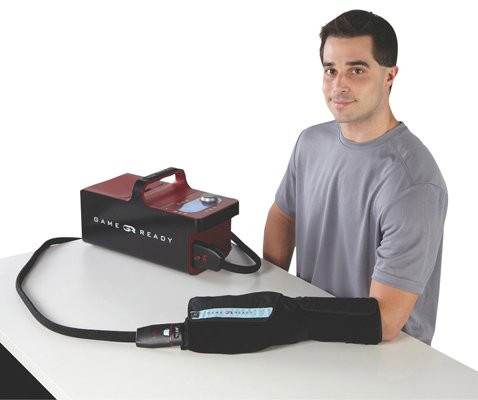 2nd Nov 2015
2nd Nov 2015
How to Use Cold Therapy across Diverse Patient Populations
When faced with a choice of heat or ice, most patients, when they are at home, will choose heat. It feels better, more soothing, than say the sometimes shock of an ice pack. However, in most cases, when pain and inflammation are involved ice is the way to go.
After suffering an injury, the body immediately attempts to repair the damage. Inflammation is a necessary part of that healing process as it defends the surrounding tissue from further damage. In First Aid, we are taught to use RICE (Rest-Ice-Compression-Elevation) immediately after a musculoskeletal injury as a way to begin controlling pain and swelling. Technological advances have created cryotherapy modalities that combine static cold and compression making it possible to simulate muscle contractions providing pressure while also cooling tissues. This dual process aids the lymphatic system, encourages more cellular oxygen supply while initiating tissue repair.
Ice has a broad range of applications, making it a versatile physical therapy tool. It helps not only athletes with sports injuries, but patients across many diverse diagnoses.

Game Ready Cold Compression Therapy Unit
Using Cryotherapy among Patient Populations in Physical Therapy
- Fibromyalgia: Slight decreases in body temperature have been documented to produce a temporary relief of Fibromyalgia pain symptoms. Using cold compression therapy will work faster, penetrating deeper into the tissues while also lasting longer than other treatment modalities. Also, cold compression units come with an assortment of wraps, allowing for treatment of all body parts, making it possible to isolate the area of pain.
- Chronic Headaches and Migraines: Cold therapy is useful when treating patients with chronic headaches. When muscle tension is creating pain and poor posture, cold therapy can help slow circulation, which will help reduce the throbbing pain caused by blood flow to the tense area, and also reduce inflammation and muscle spasms.
- ACL Reconstruction: A study published in the Brazilian Orthopedic Journal found that cryotherapy used immediately after surgery for ACL reconstruction was effective in decreasing pain and increasing range of motion of the knee.
- Bursitis & Tendinitis: Bursitis and tendinitis are both common conditions that involve inflammation of the soft tissue around muscles and bones, most often in the shoulder, elbow, wrist, hip, knee, or ankle. When having a pain flare-up, cold compression is useful in lowering circulation to the painful area, reducing inflammation and pain.
- Neuropathic Pain: Cold therapy is an analgesic: It can provide a mild numbing effect, which can relieve pain. Cold therapy can also help reduce the swelling associated with neuropathy. This can be useful if a patient’s hands or feet are prone to edema, which can increase sensations of pain.
Cold therapy is one of the most important tools physical therapists have available to use when treating for pain and inflammation. It works fast and with the addition of cold compression therapy, it’s also able to work deeper within the body’s tissues in a shorter amount of time. Cold therapy’s versatility and use across many patient populations add to its appeal when considering treatment options for patients.
For more news and information about Physical Therapy and Popular Modalties please see our Blog.





